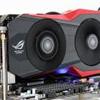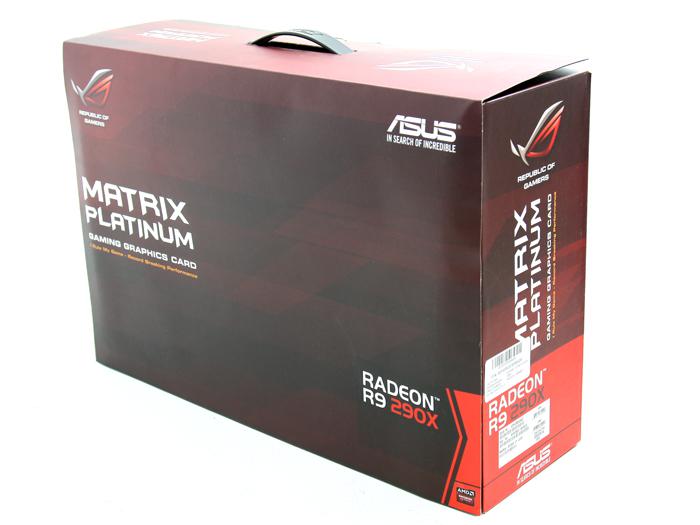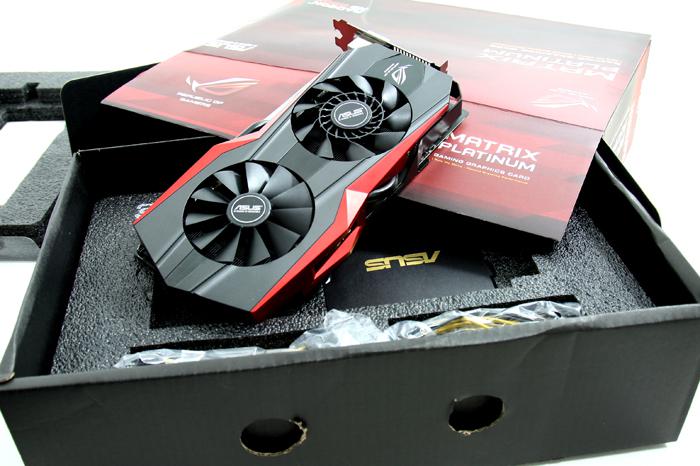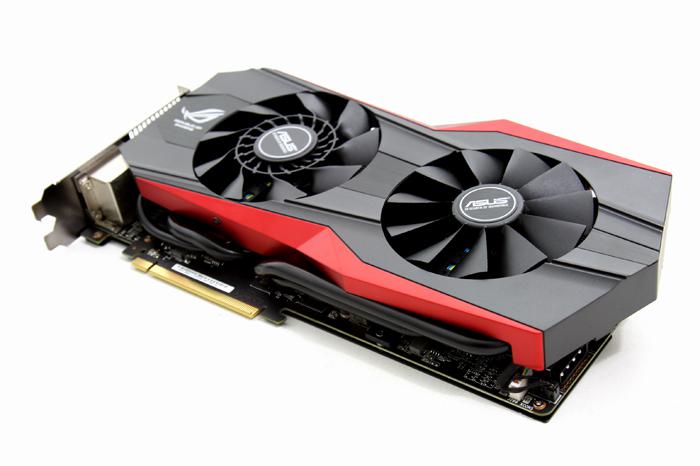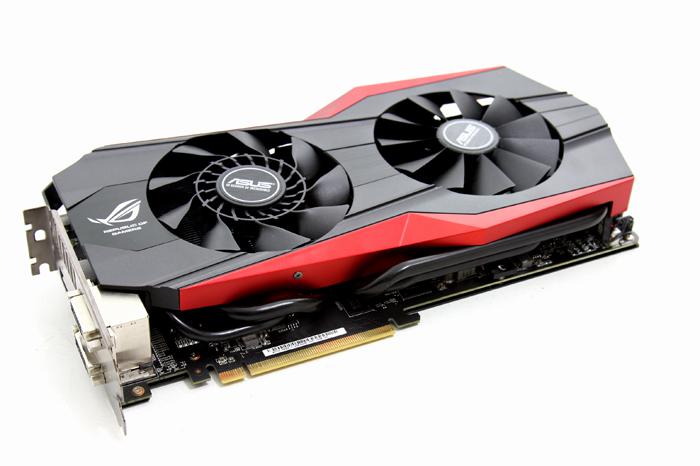Product Photos
Product Photos - R9-290X
Let's start with our photo-shoot. Two pages worth of photos then and most of it from our own photo-shoot.
Packaging first, as always. A nice and shiny yellow themed packaging will await you in the stores, it will be hard to miss that of course. As stated, the graphics card is factory overclocked towards 1050 MHz but more importantly, it is a card that has a proper cooler, a cooler that the GPU deserves and needs.
The card is 11 Inches in length which is like 28~29 cm for those in that like and reside in the Metric system. The cooling solution of the card is a dual slot cooler equipped with what ASUS calls cooltech fan technology, basically it helps to push an increased volume of air to the internal heatsink chamber with direct contact surfaces dissipating heat with the help of heatpipes. DirectCU II has two cooling fans, four nickel-plated heat pipes with at least two 10 mm pipes, and a PCB strengthening bracket as well that functions as backplate. ASUS applied dust-proof fan technology that accelerates heat removal to ensure top-notch graphics performance that’s highly stable. The hybrid blade and bearing design, with inner radial blower and outer flower-type blades, provides multi-directional airflow.
For the combo of the PCB and a Hawaii XT GPU the following fact is going to be impressive, used here is the most power-ful PCB ever utilized for an AMD Hawaii based GPU as it has a 14+2 phase power design. A nice 4 GB of 512-bit memory is fitted on there running at 5.0 Gbps. Anybody with a monitor resolution up-to 2560x1440 can play their games at extremely good quality settings, and with a small tweak or two, Ultra high definition gaming at that Big Whopper of a resolution called UHD - 3840 x 2160 pixels. And as our article will show later on, there's room for tweaking as we got this puppy running stable at roughly 1150 MHz on the boost frequency. The product has 14 power phases for the GPU helped by the ASUS DIGI+ voltage-regulator module (VRM) technology. Components wise Super Alloy Power’s Japanese-made 10K black-metallic capacitors, concrete-core chokes and hardened MOSFETs all withstand much greater stress and heat. You benefit from extra headroom for experimental performance tuning without generating distracting whines and buzzes.
AMD allows you to opt for the multi-GPU road with Crossfire as an option. You can pair two in one PC and have them do a decent workout. As mentioned earlier, a Crossfire bridge is no longer needed. The data will be moved over the PCIE (preferably 3.0) bus.
